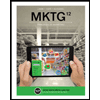
Concept explainers
Parker Hi-Fi Systems
Parker Hi-Fi Systems, located in Wellesley, Massachusetts, a Boston suburb, assembles and sells the very finest home theater systems. The systems are assembled with components from the best manufacturers worldwide. Although most of the components are procured from wholesalers on the east coast, some critical items, such as LCD screens, come directly from their manufacturer. For instance, the LCD screens are shipped via air from Foxy, Ltd., in Taiwan, to Boston’s Logan airport, and the top-of-the-line speakers are purchased from the world-renowned U.S. manufacturer Boss.
Parker’s purchasing agent, Raktim Pal, submits an order release for LCD screens once every 4 weeks. The company’s annual requirements total 500 units (2 per working day), and Parker’s per unit cost is $1,500. (Because of Parker’s relatively low volume and the quality focus—rather than volume focus—of many of Parker’s supplies, Parker is seldom able to obtain quantity discounts.) Since Foxy promises delivery within 1 week following receipt of an order release, Parker has never had a shortage of LCDs. (Total time between date of the release and date of receipt is 1 week or 5 working days.)
Parker’s activity-based costing system has generated the following inventory-related costs. Procurement costs, which amount to $500 per order, include the actual labor costs involved in ordering, custom inspection, arranging for airport pickup, delivery to the plant, maintaining inventory records, and arranging for the bank to issue a check Parker’s holding costs take into account storage, damage, insurance, taxes, and so forth on a square-foot basis. These costs equal $150 per LCD per year.
With added emphasis being placed on efficiencies in the supply chain, Parker’s president has asked Raktim to seriously evaluate the purchase of the LCDs One area to be closely scrutinized for possible cost savings is inventory procurement.
Discussion Questions
- 1. What is the optimal order number of LCDs that should be placed in each order?
- 2. What is the optimal reorder point (ROP) for LCDs?
- 3. What cost savings will Parker realize if it implements an order plan based on EOQ?
Want to see the full answer?
Check out a sample textbook solution
Chapter 12 Solutions
OPEARATIONS MANAG.REV CUSTOM 2017
- Prepare a graph of the monthly forecasts and average forecast demand for Chicago Paint Corp., a manufacturer of specialized paint for artists. Compute the demand per day for each month (round your responses to one decimal place). Month B Production Days Demand Forecast Demand per Day January 21 950 February 19 1,150 March 21 1,150 April 20 1,250 May 23 1,200 June 22 1,000' July 20 1,350 August 21 1,250 September 21 1,050 October 21 1,050 November 21 December 225 950 19 850arrow_forwardThe president of Hill Enterprises, Terri Hill, projects the firm's aggregate demand requirements over the next 8 months as follows: 2,300 January 1,500 May February 1,700 June 2,100 March April 1,700 1,700 July August 1,900 1,500 Her operations manager is considering a new plan, which begins in January with 200 units of inventory on hand. Stockout cost of lost sales is $125 per unit. Inventory holding cost is $25 per unit per month. Ignore any idle-time costs. The plan is called plan C. Plan C: Keep a stable workforce by maintaining a constant production rate equal to the average gross requirements excluding initial inventory and allow varying inventory levels. Conduct your analysis for January through August. The average monthly demand requirement = units. (Enter your response as a whole number.) In order to arrive at the costs, first compute the ending inventory and stockout units for each month by filling in the table below (enter your responses as whole numbers). Ending E Period…arrow_forwardMention four early warning indicators that a business may be at risk.arrow_forward
- 1. Define risk management and explain its importance in a small business. 2. Describe three types of risks commonly faced by entrepreneurs. 3. Explain the purpose of a risk register. 4. List and briefly describe four risk response strategies. (5 marks) (6 marks) (4 marks) (8 marks) 5. Explain how social media can pose a risk to small businesses. (5 marks) 6. Identify and describe any four hazard-based risks. (8 marks) 7. Mention four early warning indicators that a business may be at risk. (4 marks)arrow_forwardState whether each of the following statements is TRUE or FALSE. 1. Risk management involves identifying, analysing, and mitigating risks. 2. Hazard risks include interest rate fluctuations. 3. Entrepreneurs should avoid all forms of risks. 4. SWOT analysis is a tool for risk identification. 5. Scenario building helps visualise risk responses. 6. Risk appetite defines how much risk an organisation is willing to accept. 7. Diversification is a risk reduction strategy. 8. A risk management framework must align with business goals. 9. Political risk is only relevant in unstable countries. 10. All risks can be eliminated through insurance.arrow_forward9. A hazard-based risk includes A. Political instability B. Ergonomic issues C. Market demand D. Taxation changesarrow_forward
 Purchasing and Supply Chain ManagementOperations ManagementISBN:9781285869681Author:Robert M. Monczka, Robert B. Handfield, Larry C. Giunipero, James L. PattersonPublisher:Cengage Learning
Purchasing and Supply Chain ManagementOperations ManagementISBN:9781285869681Author:Robert M. Monczka, Robert B. Handfield, Larry C. Giunipero, James L. PattersonPublisher:Cengage Learning Contemporary MarketingMarketingISBN:9780357033777Author:Louis E. Boone, David L. KurtzPublisher:Cengage Learning
Contemporary MarketingMarketingISBN:9780357033777Author:Louis E. Boone, David L. KurtzPublisher:Cengage Learning



